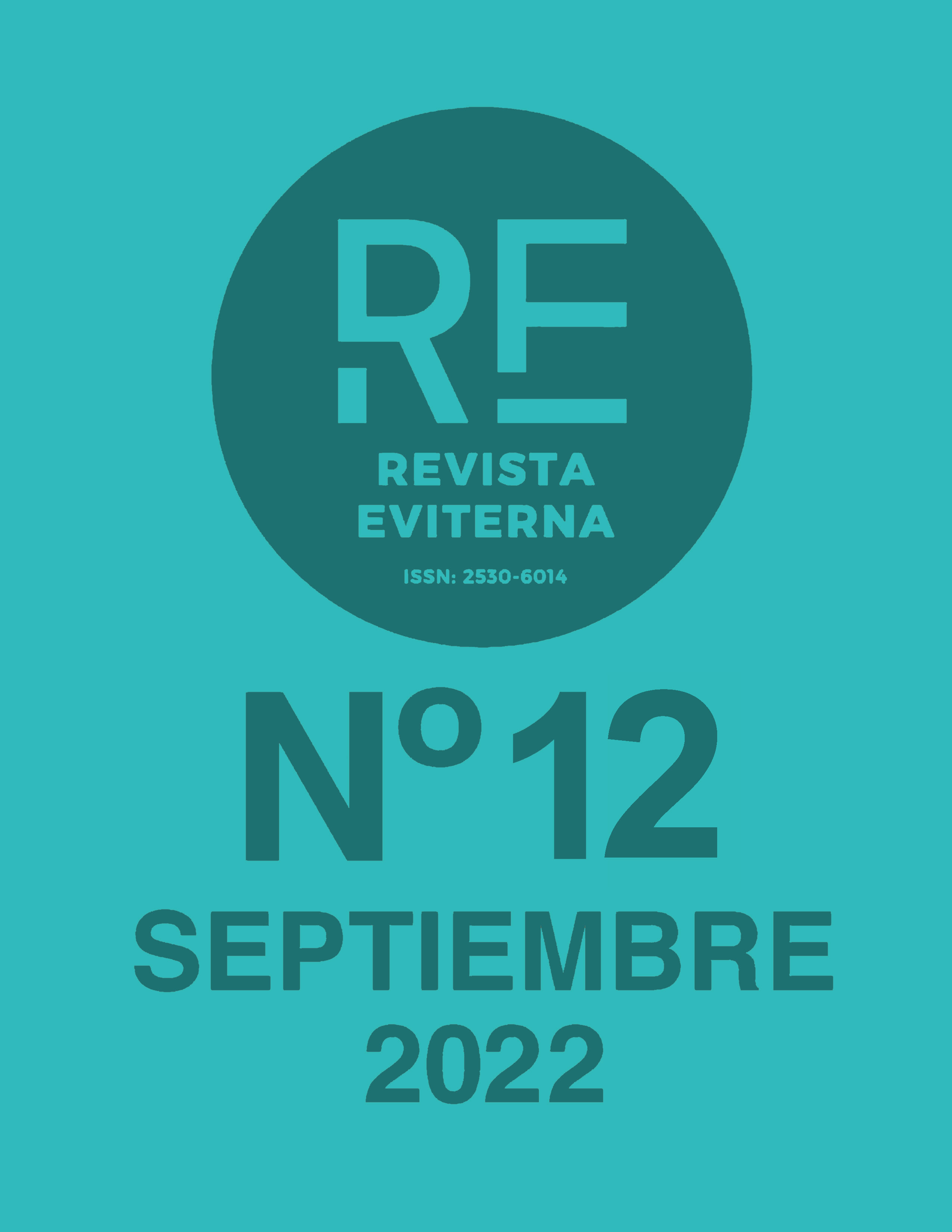Teaching practice of antiquity with gender perspective
A proposal made by the ARSMAYA research group
DOI:
https://doi.org/10.24310/Eviternare.vi12.14635Keywords:
ancient art, archaeology, art history, teaching innovation, womenAbstract
The innovation teaching project “Nou-PID: Innovación en la docencia de la Historia del arte: acciones para dar visibilidad a las mujeres en la Antigüedad” of the Universitat de València is presented. First, the main goals are explained, which are based on the implementation of the gender perspective in the studies of Antiquity through the flipped classroom and autonomous and integrated learning methodologies. Next, the teaching practices carried out in the different subjects are developed. They are based on the use of pre-existing quality online resources, and the creation of an online platform through the creation of a blog and the generation of videos. In the last section, a global assessment of the project is undertaken and the study of feminine images of the past is valued not only to make their presence visible in ancient societies, but also to reflect on the creation of femenine stereotypes.
Downloads
Metrics
References
Arias Blanco, J. M. (2006). Clases prácticas. En Miguel Díaz, M. de (Coord.), Metodologías de enseñanza y aprendizaje para el desarrollo de competencias. Orientaciones para el profesorado universitario ante el espacio europeo de educación superior (pp. 83-102). Alianza Editorial.
Bendala, M. y López Grande, M. J. (1996). Arte egipcio y del Próximo Oriente. Historia 16.
Biggs, J. (2005). Calidad del aprendizaje universitario. Narcea.
Blackshields, D., Cronn, J.G.R., Higgs, B., Kilcommins, S., McCarthy, M. y Ryan, A. (2016). Aprendizaje Integrado. Investigaciones internacionales y casos prácticos. Narcea.
Coltofean-Arizancu, L., Gaydarska, B. y Matic, U. (2021). Gender stereotypes in archaeology. A short reflection in image and text. Sidestone Press.
Desroches-Noblecourt, C. (1999). La mujer en tiempos de los faraones. Editorial Complutense.
Echevarría Eristegui, A. (13 de noviembre de 2019). La obsesión por la belleza en el antiguo Egipto. La Vanguardia Recuperado de https://www.lavanguardia.com/historiayvida/historia-antigua/20170706/47313998004/la-obsesion-por-la-belleza-en-el-antiguo-egipto.html#foto-7
Haas, R., James, W., Buonasera, T., Southon, J., Chen, J.C., Noe, S., Smith, K., Viviano LLave, C., Eerkens, J., Parker, G. (2020). Female hunters of the early Americas. Science Advanced (6), 1-10. https://www.science.org/doi/epdf/10.1126/sciadv.abd0310
Hornung, E. (2000). Introducción a la egiptología. Trotta.
Manniche, L. (1984). El arte egipcio. Alianza Forma.
Miguel Díaz, M. de (2006). Métodos y modalidades de enseñanza en la educación superior. En Miguel Díaz, M. de (Coord.), Metodologías de enseñanza y aprendizaje para el desarrollo de competencias. Orientaciones para el profesorado universitario ante el espacio europeo de educación superior (pp. 17- 26), Alianza Editorial.
Moya Medina, J. L., Jarauta Borrasca, B. y Imbernon Muñoz, F. (2010). La enseñanza reflexiva en la educación superior. Octaedro.
Prieto Martín, A. (2017). Flipped Learning: Aplicar el Modelo de Aprendizaje Inverso. Narcea.
Robins, G. (1996). Las mujeres en el Antiguo Egipto. Akal.
Rodríguez Pérez, D. (2015). Un mundo de objetos. La arqueología de la belleza. En Sánchez, C. y I. Escobar (Coord.), Dioses, héroes y atletas. La imagen del cuerpo en la Grecia antigua (pp. 41-53). Museo Arqueológico Regional.
Downloads
Published
How to Cite
Issue
Section
License
All the contents published in Revista Eviterna are subject to the Creative Commons Reconocimento-NoComercia-Compartirigual 4.0 license, the full text of which can be found at <http://creativecommons.org/licenses/by-nc-sa/4.0>
They may be copied, used, disseminated, transmitted and publicly exposed, provided that:
The authorship and original source of your publication (Journal, editorial and URL of the work) are cited.
They are not used for commercial purposes.
The existence and specifications of this use license are mentioned.

Copyright is of two kinds: moral rights and patrimonial rights. Moral rights are perpetual, inalienable, inalienable, inalienable, inalienable and imprescriptible prerogatives.
In accordance with copyright legislation, Revista Eviterna recognizes and respects the moral rights of the authors, as well as the ownership of the economic right, which will be transferred to the University of Malaga for dissemination in open access.
The economic rights refer to the benefits obtained by the use or disclosure of the works. Revista Eviterna is published in open access and is exclusively authorized to carry out or authorize by any means the use, distribution, disclosure, reproduction, adaptation, translation or transformation of the work.
It is the responsibility of the authors to obtain the necessary permissions of the images that are subject to copyright.







12.png)
